AIR 15 Feature: Julie Clapton
Sahana Srinivasan, Artist Programs intern at TAC, got together with current AIR 15 resident Julie Clapton: Julie Clapton is a fiber based artist living and working in Brooklyn, New York. After attending Rhode Island School of Design for Textiles, Julie has continued her practice within the Textile Arts Center’s Residency program. Committing herself with care and intention to blur the confines of disciplines, coalescing them to in turn create new growth and understanding about the realms in which textiles can live. Experimenting and pushing the terminology of functionality, adornment, and tradition through unconventional techniques such as staining to gather multiple narratives and interweave new visual languages.
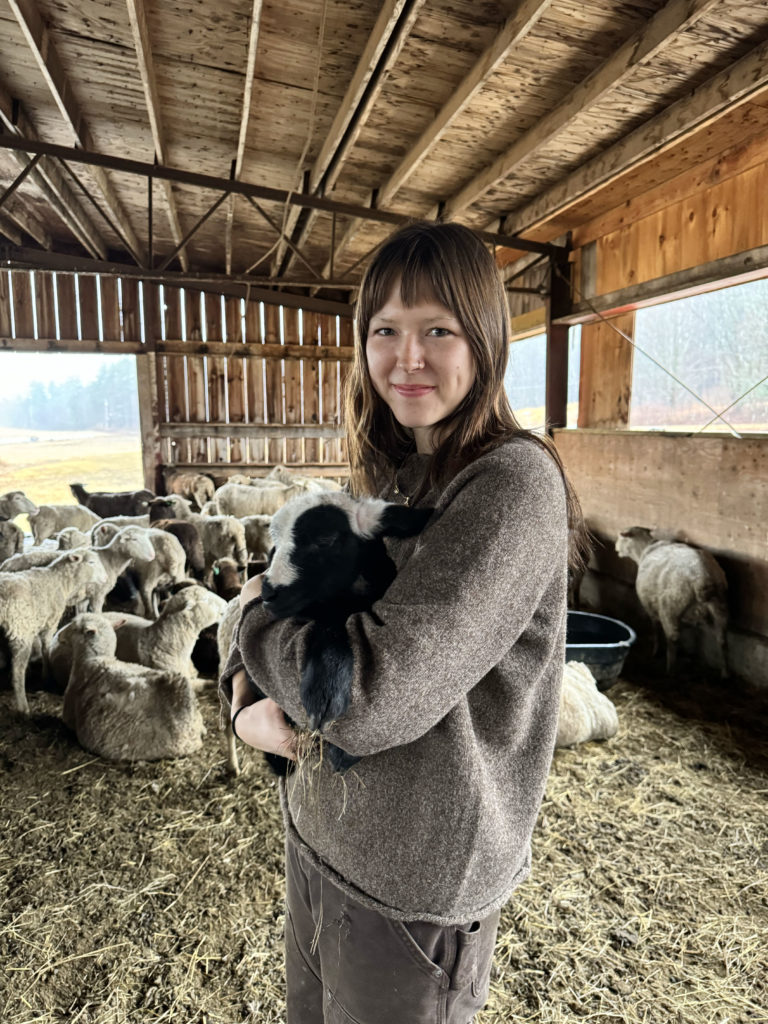
"I thought my process was slow before actually doing it but it’s much slower which has been forgiving for me. Naturally our bodies and states move like seasons and so I have been giving myself the permission to let my art practice take the same approach. Moving through the harvesting stage, resting stage and now the blooming stage."
Sahana: Hi Julie! How are you and what have you been up to recently?
Julie: Hey! I feel like I spent most of winter and a good chunk of the play period harvesting my materials, primarily wool. Much of this time has been very meditative, especially during the spinning process. As I move forward, I’ve been delving into research to transform the material into a final object. My work looks to honor the animals, farmer, and the land where it all originates. I hope to encompass a reciprocal nature of creation.
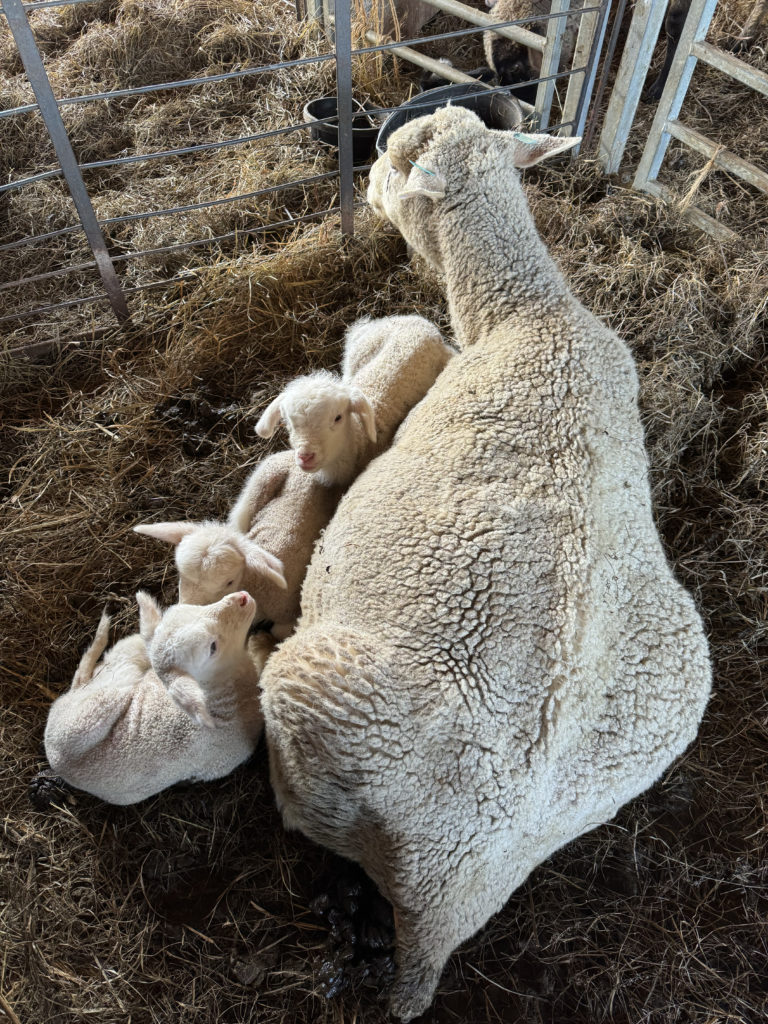
S: What kind of dynamic do you find between your previous work and your current work?
J: My last body of work focused on protection garments, and this project continues in the realm of protection. The piece was made entirely with wool, so now I’m delving deeper into the materiality of wool as the main exploration and focus. It is an ancient protective fiber, and with the act of shearing allowing for regrowth, there is this inherent feeling of renewal and re-generativity.
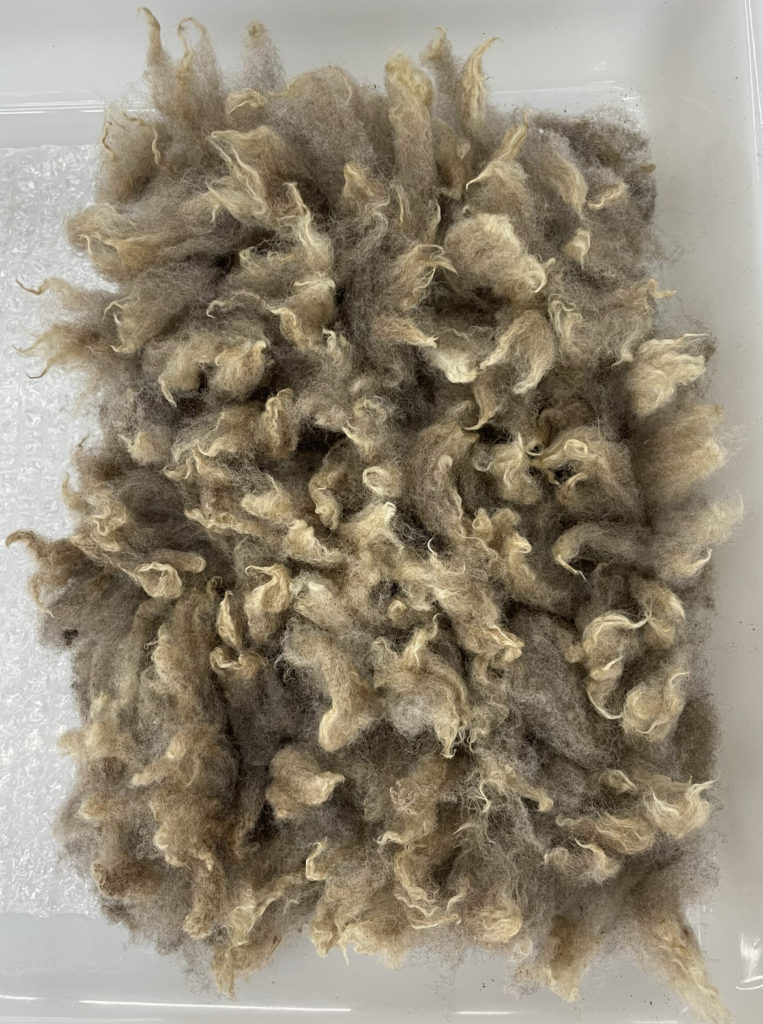
S: Throughout this time of material exploration, what has been a key point of transformation in your process?
J: Definitely the time I spent working at the farm! Prior to actually working there, I had already begun the process of acquiring and caring for wool. The first was through the Sheep and Wool Festival in Rhinebeck and the second was going to Lilas Mountain Wool, where I had a mutual connection to the farmer. I really felt a shift in understanding while helping during Lambing season, I mean my material was quite literally speaking to me, even if through bleats, about how to help! My processes used to be very insular, but now my experiences are opening that circle up to the community that enables my practice.
S: You mention care and protection a lot, almost as these pillars in your work. What do those qualities really signify for you?
J: I feel very grateful to be surrounded by very strong and caring mentors, mothers and women. I realized when I worked on the farm with all the community there, that my processes are its own form of mothering. The transformation from fleece to yarn is so time and care intensive, and that same time and care goes into raising a lamb, or looking after the land. Shepherding and mothering are intertwined. Care has become so integral to every aspect of my practice that I can’t even think about straying away from it. Also, I recently learned that when sheep are stressed or experience trauma, a break in the fleece happens, so care is fundamental for good quality wool too!
S: How does the space of residency reflect the way in which you see your practice now?
J: I’ve had the space to slow down here. During play, I had the chance to just put my mind in the backseat and get my hands to work. A lot of the process has been relearning to be a child with play and to not always put the pressure of needing some massive conceptual thought process in order to make. Even as we’re wrapping up the residency, I try my best to keep the child-like play with me. I also found through this residency that I have been able to carve out my ethics, in knowing my sources, using natural dyes and fibers, and more recently communication and engagement with the community I am working alongside.
S: Speaking of slowing down too, how does that impact the way in which you continue to go about your practice?
J: I thought my process was slow before actually doing it but it’s much slower which has been forgiving for me. Naturally our bodies and states move like seasons and so I have been giving myself the permission to let my art practice take the same approach. Moving through the harvesting stage, resting stage and now the blooming stage. That has felt really special, that time has become very linked with nature in terms of my work. There’s a greater sense of awareness as to how I direct my energy as well, so I feel a lot less constrained.
S: You’ve also talked about rituals being very intertwined with your practice, could you touch more on that? What are your current rituals, as well?
J: In my work I harken back to English folk tales and rituals, drawing from my interpretations and rememberings of these tales from my home. I have always been entranced by them, because these rituals have so many stories that link to celebrations and relationships to land. I am interested in the rituals we still hold in our culture and the ones lost or left behind, such as the calendar and the way time was viewed with solstices. It is a spirituality that grows from the ground and I love the strange beauty of it.
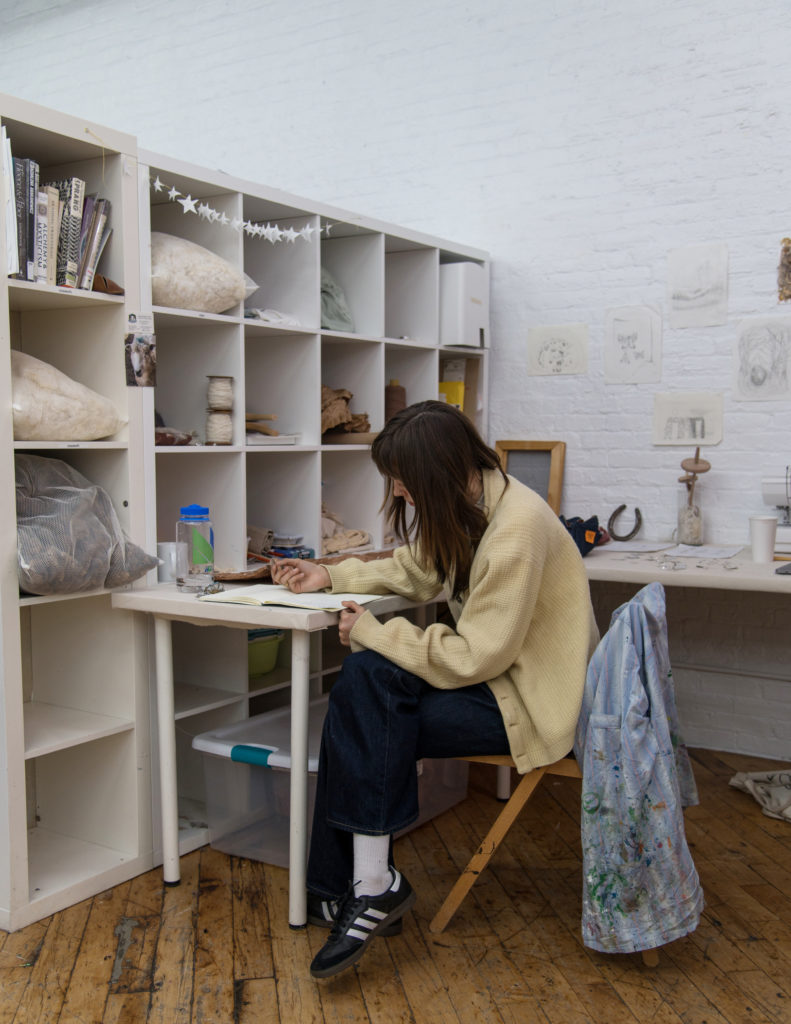
S: Remembering also brings me to documentation, and how does that influence your practice? How do you think documentation weaves its way into being an actual form in your practice?
J: Documentation has become a really important part of my process, and I feel like it has been a subconscious shift as I learn a new way of working. In order to learn from myself I kept a journal detailing my emotional and physical reactions to each stage of the wool processing. The physicality of my practice and the intimacy of my materials is new and slightly foreign to me which is why it has all been so exciting. Mary Berle, the farmer, and I have been learning from each other. While I was on the farm, I also kept an audio diary. There was so much going on that I would get into bed and talk and talk into my phone, so at some point I will use those!
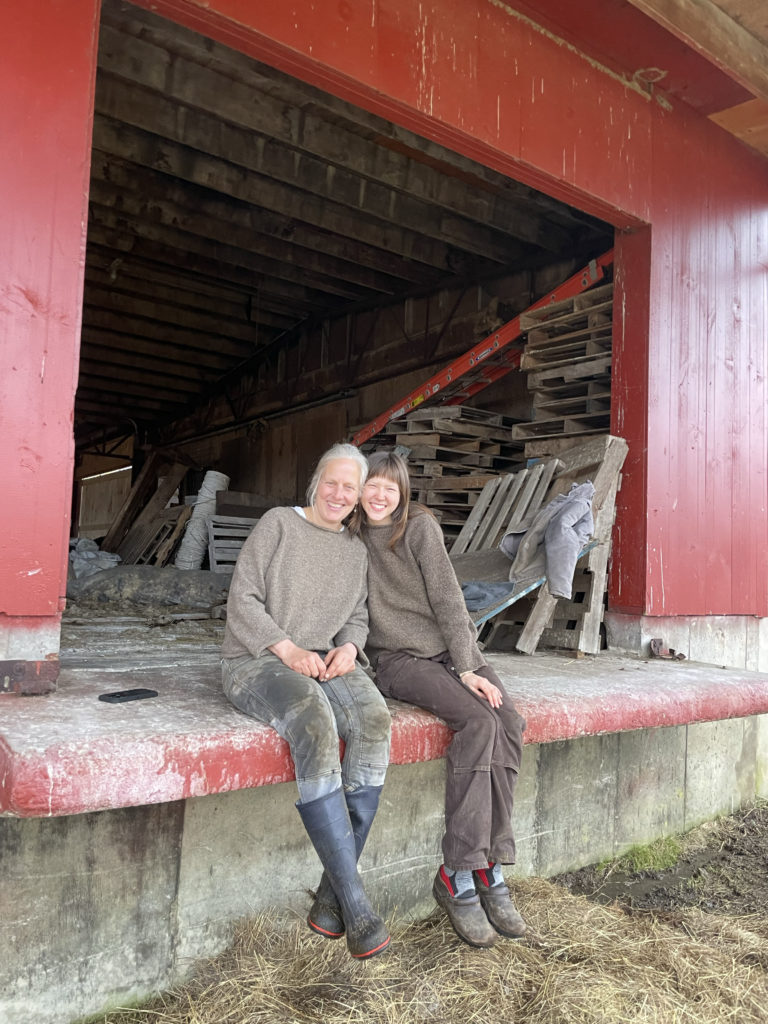
S: You mention how you and Mary have this habit of exchanging knowledge. How does that make you think about the communal aspect of making?
J: It’s been a blessing to have Mary in my life and for her to trust me through this process, she has become a very special friend. So it’s really important for me to hear her feedback because I want my work to honor what she does. From my standpoint as an artist, it’s important to shape a continuous conversation that respects the entire community. The practice is bigger than me, at the end of day. It always involves the land, the animals, and the farmer.
S: I guess that brings me to what you’re looking forward to and where things are going?
J: I will be working on Lilas Mountain wool farm over the summer and hopefully be there for shearing as well. I'm excited to be creating and watching sheep in the pastures, harvesting peonies, spinning wool and learning among the land.

Click here to learn more about Lila's Mountain Wool Farm